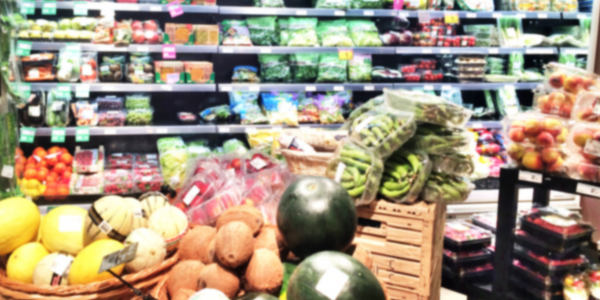Customer Company Size
Large Corporate
Region
- America
Country
- United States
Product
- Tableau
Tech Stack
- Oracle databases
- Teradata
Implementation Scale
- Enterprise-wide Deployment
Impact Metrics
- Cost Savings
- Productivity Improvements
Technology Category
- Analytics & Modeling - Real Time Analytics
Applicable Industries
- Retail
Applicable Functions
- Business Operation
- Sales & Marketing
Use Cases
- Supply Chain Visibility
- Inventory Management
Services
- Data Science Services
About The Customer
Supervalu Inc. is one of the largest grocery and pharmacy companies in the United States with over 2,500 retail locations. In 2012, Supervalu earned over $36 billion in revenues and ranked #75 on the Fortune 500 list. However, the company has faced numerous challenges in recent years. The company generates extraordinary quantities of data along every point of the value chain from ordering, forecasting, inventory management, and supply chain hand-offs to point of sale transactions. Customers visit an average of once or twice a week and each of these transactions has rich data associated with it, including items bought, promotions, taken, coupons used, composition of the basket, and so on.
The Challenge
Supervalu Inc., one of the largest grocery and pharmacy companies in the United States, was facing numerous challenges and was in a state of turnaround. The company recognized the need to look at their data in new ways and seek out opportunities to improve efficiency, productivity, and revenue. They required an agile business intelligence tool that could support mobile data access to improve day-to-day operations, align the organization around a single, comprehensive view of data, quickly define and iterate on new metrics, draw simultaneously from multiple in-house and third party data sources, assess data opportunities without extensive up-front IT investment, and accelerate the work of analysts and business users with self-service functionality. Before Tableau, Supervalu had ten different business intelligence tools. Their primary tool was unable to build new reports rapidly or iterate in a timely fashion. It was also unable to reach into disparate data sources and create mash-ups without significant IT overhead and complexity.
The Solution
Supervalu adopted Tableau, a business intelligence tool that could be used on any tablet or smartphone, enabling the delivery of real-time data to on-the-ground personnel. Each of the company’s individual store directors and distribution center managers now enjoy access to Tableau dashboards on an iPad that they can carry with them throughout the day. Tableau enhances and unites Supervalu’s BI strategy with an overlay of flexibility. It allows them to analyze and visualize data quickly no matter where that data is located or how it is formatted. Internal data sources include spreadsheets, CSV files, XML files, Oracle databases, pricing systems, and Teradata, just to name a few. Tableau can also support mash-ups with third party data sources like U.S. Census data and weather pattern information from NOAA. Tableau is also improving collaboration across multiple groups at Supervalu, including marketing, merchandizing, supply chain, and finance.
Operational Impact
Quantitative Benefit

Case Study missing?
Start adding your own!
Register with your work email and create a new case study profile for your business.
Related Case Studies.

Case Study
Improving Production Line Efficiency with Ethernet Micro RTU Controller
Moxa was asked to provide a connectivity solution for one of the world's leading cosmetics companies. This multinational corporation, with retail presence in 130 countries, 23 global braches, and over 66,000 employees, sought to improve the efficiency of their production process by migrating from manual monitoring to an automatic productivity monitoring system. The production line was being monitored by ABB Real-TPI, a factory information system that offers data collection and analysis to improve plant efficiency. Due to software limitations, the customer needed an OPC server and a corresponding I/O solution to collect data from additional sensor devices for the Real-TPI system. The goal is to enable the factory information system to more thoroughly collect data from every corner of the production line. This will improve its ability to measure Overall Equipment Effectiveness (OEE) and translate into increased production efficiencies. System Requirements • Instant status updates while still consuming minimal bandwidth to relieve strain on limited factory networks • Interoperable with ABB Real-TPI • Small form factor appropriate for deployment where space is scarce • Remote software management and configuration to simplify operations

Case Study
Digital Retail Security Solutions
Sennco wanted to help its retail customers increase sales and profits by developing an innovative alarm system as opposed to conventional connected alarms that are permanently tethered to display products. These traditional security systems were cumbersome and intrusive to the customer shopping experience. Additionally, they provided no useful data or analytics.

Case Study
How Sirqul’s IoT Platform is Crafting Carrefour’s New In-Store Experiences
Carrefour Taiwan’s goal is to be completely digital by end of 2018. Out-dated manual methods for analysis and assumptions limited Carrefour’s ability to change the customer experience and were void of real-time decision-making capabilities. Rather than relying solely on sales data, assumptions, and disparate systems, Carrefour Taiwan’s CEO led an initiative to find a connected IoT solution that could give the team the ability to make real-time changes and more informed decisions. Prior to implementing, Carrefour struggled to address their conversion rates and did not have the proper insights into the customer decision-making process nor how to make an immediate impact without losing customer confidence.

Case Study
Ensures Cold Milk in Your Supermarket
As of 2014, AK-Centralen has over 1,500 Danish supermarkets equipped, and utilizes 16 operators, and is open 24 hours a day, 365 days a year. AK-Centralen needed the ability to monitor the cooling alarms from around the country, 24 hours a day, 365 days a year. Each and every time the door to a milk cooler or a freezer does not close properly, an alarm goes off on a computer screen in a control building in southwestern Odense. This type of alarm will go off approximately 140,000 times per year, equating to roughly 400 alarms in a 24-hour period. Should an alarm go off, then there is only a limited amount of time to act before dairy products or frozen pizza must be disposed of, and this type of waste can quickly start to cost a supermarket a great deal of money.

Case Study
Supermarket Energy Savings
The client had previously deployed a one-meter-per-store monitoring program. Given the manner in which energy consumption changes with external temperature, hour of the day, day of week and month of year, a single meter solution lacked the ability to detect the difference between a true problem and a changing store environment. Most importantly, a single meter solution could never identify root cause of energy consumption changes. This approach never reduced the number of truck-rolls or man-hours required to find and resolve issues.








